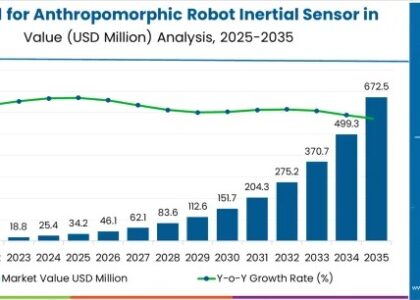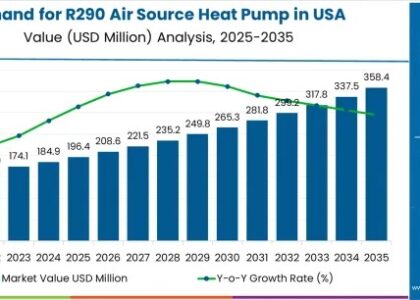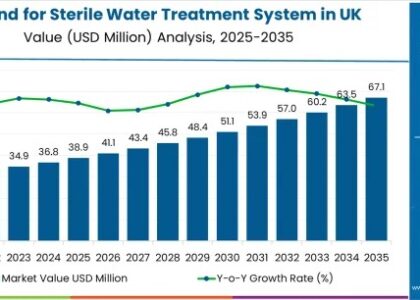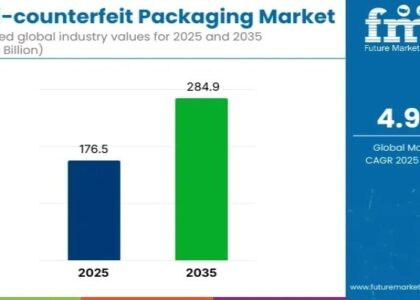The United States infant formula market is poised for steady expansion, projected to reach an estimated value of USD 6.56 billion in 2025, and further grow to USD 9.08 billion by 2035. This growth trajectory reflects a compound annual growth rate (CAGR) of 3.3% over the forecast period from 2025 to 2035. The market’s resilience and consistent growth can be attributed to shifting consumer behaviors and a stronger focus on infant nutrition.
Growth in the U.S. infant formula market is fueled by the rising awareness of the importance of early-life nutrition, coupled with increasing demand for safe and nutritionally balanced alternatives to breastfeeding. Today’s parents are more informed and selective, opting for infant formula products that mirror breast milk in nutritional value. This demand is further amplified by lifestyle shifts, health conditions, and personal preferences that have prompted many to seek reliable formula options. As a result, manufacturers are innovating with formulas that are organic, non-GMO, and infused with probiotics to meet consumer expectations and regulatory standards.
Gain Early Access to Market Insights – Request a Sample: https://www.futuremarketinsights.com/reports/sample/rep-gb-17839
United States Infant Formula Market Overview
The United States infant formula market is witnessing a notable transformation, driven by shifting parental priorities, advances in pediatric nutrition science, and expanding product innovations. According to a recent market report by Future Market Insights, the U.S. infant formula market is projected to grow significantly, with an increasing focus on organic and functional variants that cater to health-conscious parents.
This growth trend is closely linked to rising awareness regarding infant nutrition, evolving family structures, and a growing demand for fortified and specialized formula options.
Key Drivers: Organic and Functional Formulas on the Rise
One of the most impactful developments in the U.S. infant formula market is the surging demand for organic and clean-label products. Parents are prioritizing formulas that closely mimic breast milk, contain fewer synthetic additives, and offer enhanced nutritional profiles. This has led to a rapid increase in the popularity of organic infant formula market demand in the USA, especially among millennials and Gen Z parents.
The use of functional ingredients in infant formula, such as DHA, ARA, probiotics, and prebiotics, is also becoming a key differentiator. These ingredients are designed to support cognitive development, gut health, and immunity in infants, creating a competitive edge for brands that innovate in this space.
Key Takeaways:
• The U.S. infant formula market is forecasted to grow from USD 6.56 billion in 2025 to USD 9.08 billion by 2035.
• The market is expected to register a 3.3% CAGR between 2025 and 2035.
• Increasing awareness of infant health and nutrition is a major growth driver.
• Demand is growing for organic, non-GMO, and probiotic-enriched formulas.
• Key players are expanding product portfolios to cater to evolving consumer preferences.
Elevate Your Business Decisions – Purchase the Full Report: https://www.futuremarketinsights.com/reports/united-states-infant-formula-market
Competitive Analysis
The U.S. infant formula market is highly competitive, with a mix of global giants and emerging players investing in research, product development, and marketing. Key industry participants include:
• Abbott Laboratories – Market leader with its Similac product line, focusing on both conventional and organic segments.
• Reckitt Benckiser (Mead Johnson Nutrition) – Known for Enfamil, a top-selling brand in the U.S., with a strong emphasis on DHA and brain development.
• Nestlé USA (Gerber) – A significant player offering a range of organic and plant-based infant formulas.
• Bobbie – A rising D2C player appealing to health-conscious millennial parents with its USDA-certified organic infant formulas.
• Nature’s One – Specializing in organic pediatric nutrition, expanding its reach through online platforms.
Strategic collaborations, capacity expansion, and targeted marketing campaigns are key strategies shaping the competitive landscape. Companies are also focusing on transparent labeling and ethical sourcing practices to build brand trust and consumer loyalty.
United States Infant Formula Market by Product Type, Ingredient, Distribution Channel, and Packaging
By Product Type:
By product type, the industry is classified as starting milk formula, follow-on milk formula, and special milk formula.
By Distribution Channel:
By distribution channel, the industry is classified as specialty outlets, supermarkets, online stores, pharmacy stores, and others.
By State:
By state, the industry is segmented as California, Texas, Florida, New York, Illinois, Ohio, North Carolina, Michigan, Colorado, Wisconsin, and Washington.






